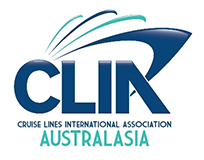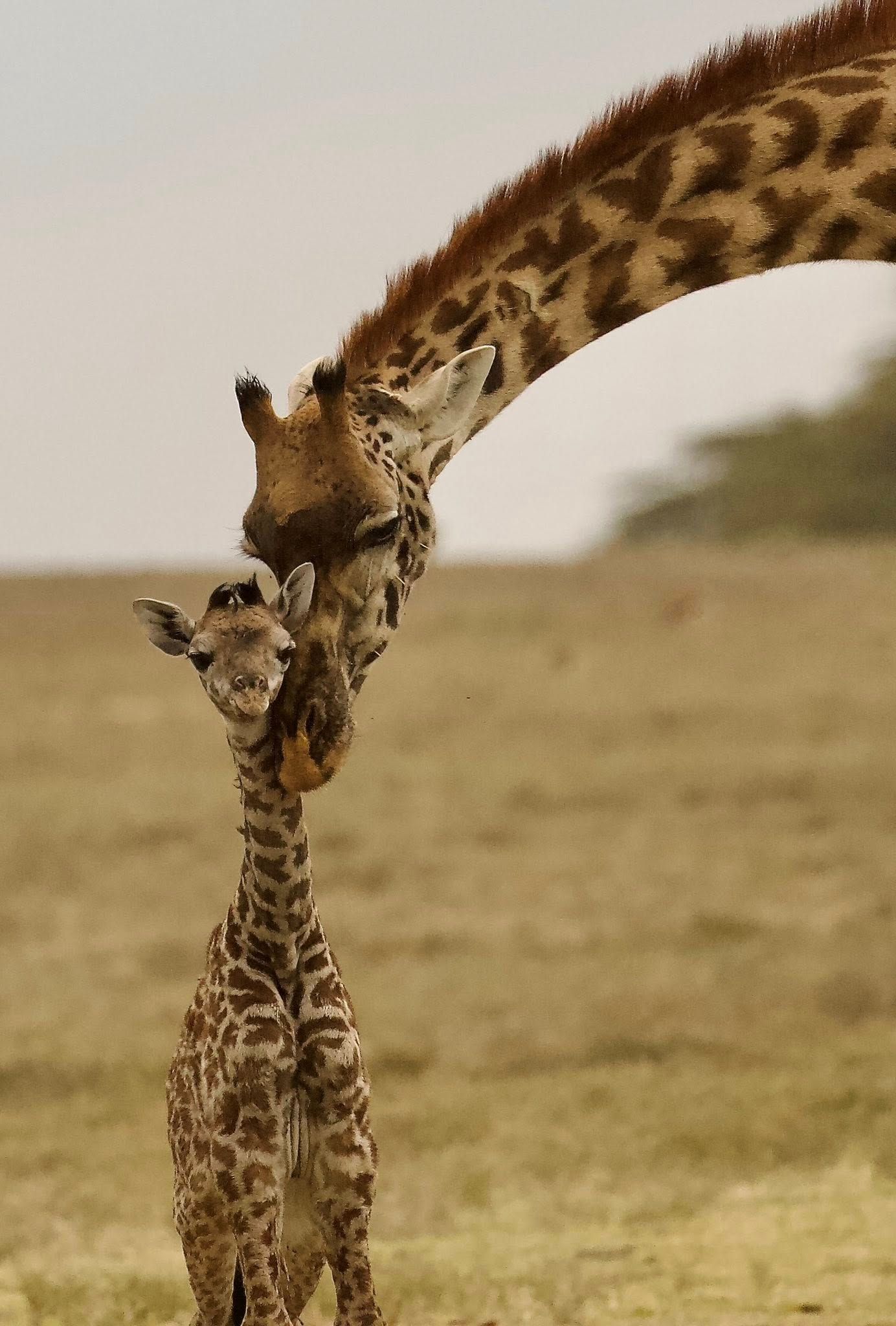
Denise Manning
Kenya Classic Small Group Tour - June 2025
Mana Travel Adventures - Bellbowrie, QLD
There’s something truly magical about sharing our homeland with travellers who dream of experiencing the real Africa, its wildlife, rolling landscapes, and the warm hospitality of its people. We grew up in Africa, and now as Brisbane-based travel agents, we love to create journeys that go beyond the ordinary. Like the recent small-group safari in Kenya that we led, in conjunction with our trusted suppliers on the ground. Join us as we look back on the highlights!
My Personal Travel Experience
Nairobi: The Gateway to our Safari
Our journey began in Nairobi, Kenya’s vibrant capital. We were warmly welcomed at the airport by Nic, whose friendly smile and local insights immediately set the tone for the trip. Rebecca, also part of our trusted local team, made our transfer to the Panafric Hotel smooth and stress-free through the bustling streets of the capital.
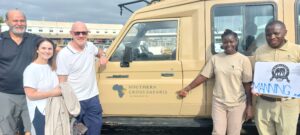
By Train to the Wild: Tsavo East National Park
Early the next day we boarded the train to Voi, a scenic journey through Kenya’s rolling landscapes and wilderness areas including Nairobi National Park. From the train we spotted four of the Big Five (Elephant, Rhino, Lion and Buffalo), only missing the elusive Leopard.
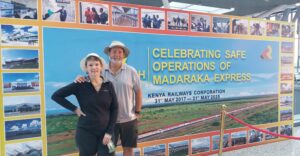
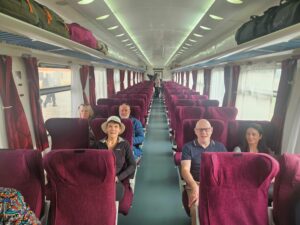
At Voi, we were greeted by Thomas Tungu, our exceptional Driver/Guide, who would be with us every step of the way. His deep knowledge, patience, and good humour made this safari truly memorable for everyone.
An African safari is all about the journey as much as the destination, and that includes travelling in the right vehicle. Throughout Kenya, our groups travel in custom safari vehicles designed for comfort and unbeatable game viewing. Each vehicle has just six comfortable seats, so everyone has a window view, and the pop-top roof opens up to let you stand safely for the best wildlife photography and 360-degree views. It’s the perfect way to experience the bush: safe, spacious, and close to nature.
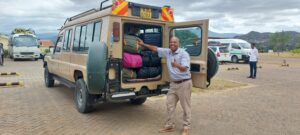
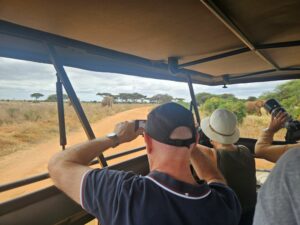
Thomas drove us to Tsavo East National Park, one of Kenya’s largest and most dramatic parks.
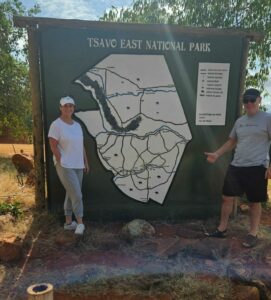
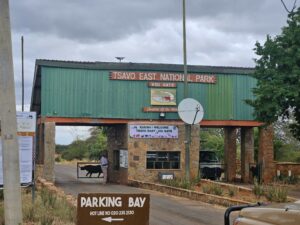
Tsavo is not only known for its sweeping landscapes and abundant wildlife, but also home to one of Africa’s most famous legends: the Man-Eaters of Tsavo. In 1898, during the construction of the Nairobi to Mombasa railway, two notorious male lions terrorised the railway camps, reportedly killing over 100 workers before they were finally shot. Their story has become part of Tsavo’s lore, adding an extra layer of awe when you spot lions roaming these same plains today, a reminder of the raw, untamed power of nature here.
Our base in Tsavo East was the beautiful Satao Tented Camp, a true classic safari camp that gives you the feel of old-world adventure without giving up comfort. Luxury tents under thatched cover are spaced around a busy waterhole, so you don’t even have to leave your verandah to see elephants, giraffes, or buffalo coming in for a drink.
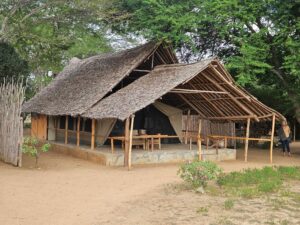
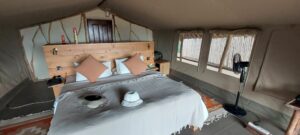
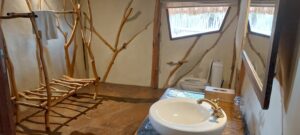
The camp’s elevated lookout platform is a perfect spot to relax after an exhilarating game drive, watching the animals drinking at the waterhole while you enjoy a cup of tea or a sundowner drink. Or wake early to the resident herd of impala grazing outside your tent, or catch the last of the nocturnal drinkers before they merge into the wilderness. A special treat for us was watching the ghostly shadows around the floodlit waterhole come to light revealing a herd of Tsavo’s legendary giant tuskers. You really feel part of the wild here, but with all the creature comforts that you need.
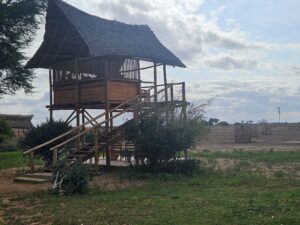

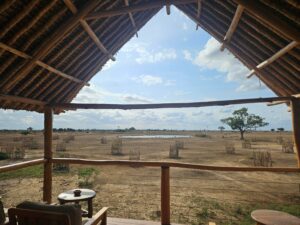

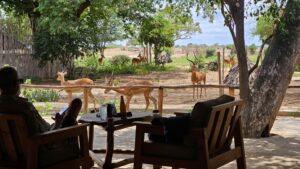
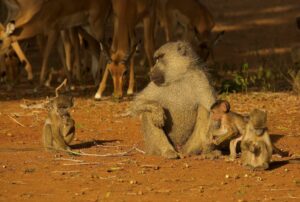
A highlight of our stay in Tsavo East was sundowners in the bush, followed by dressing up in traditional clothing and dancing around the fire singing the Hakuna Mutata song, East Africa’s unofficial anthem.
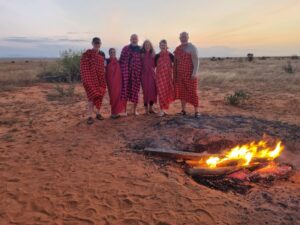
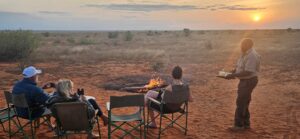
Tsavo is home to a wide range of animals, including the rather unique-looking Gerenuk, aka the “Giraffe Antelope”. We were fortunate to see lion on two occasions, as well as buffalo, eland, giraffe, zebra, oryx, Grants gazelle and lots of elephant. The birdlife was amazing, including sighting of the majestic Secretary Bird, Superb Starlings, Chestnut-bellied Sandgrouse, and the prehistoric-looking Vulturine Guinea Fowl.

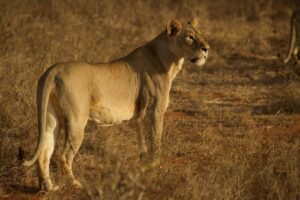
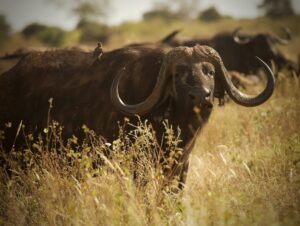


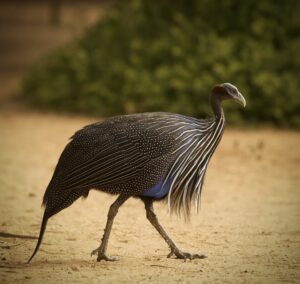
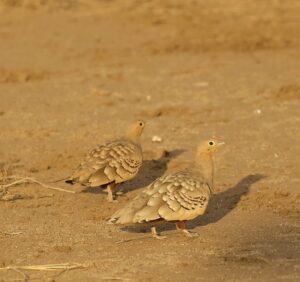
🐘 Through Tsavo West to Elerai Camp
From Tsavo East, we made our way through the ever-changing landscapes of Tsavo West National Park, spotting more wildlife along the way, including our first glimpse of the striking Fringe-eared Oryx, the tiny Dik-Dik and the Lesser Kudu (another first for us).
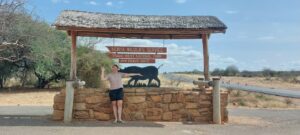
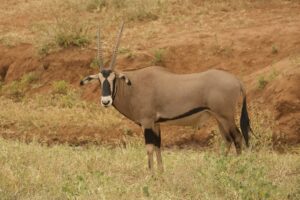
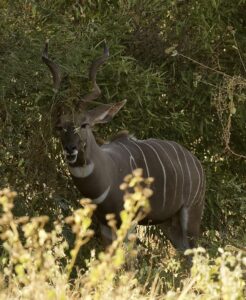
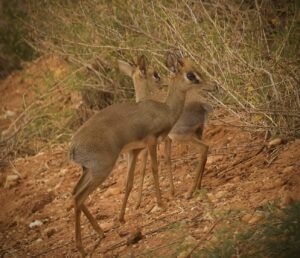
The soil here is richer and redder than in Tsavo East, giving the local elephants a beautiful rusty glow that makes them look almost sculpted from the land itself. It’s fascinating how much the colour of the soil transforms their appearance. In Tsavo East, the elephants tend to look more greyish, closer to their natural skin tone, while in Namibia’s Etosha National Park, the pale dust turns them a ghostly white. It’s like each park gives its elephants a unique coat of armour, blending them perfectly into their surroundings and reminding you just how connected these animals are to the landscapes where they roam.
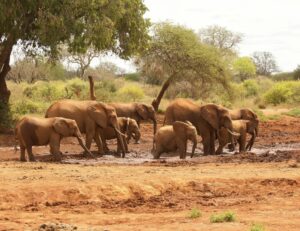
We paused our journey for a delicious lunch at Kilaguni Serena Lodge, a beautiful spot perched on a ridge with sweeping views of a busy waterhole below. As we sat back and enjoyed our meal, we watched buffalo, zebra, and eland wander in to quench their thirst, completely unfazed by our presence. There’s nothing quite like sipping a cold drink while animals wander past just metres away.
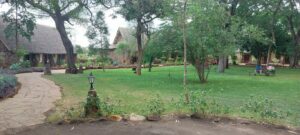
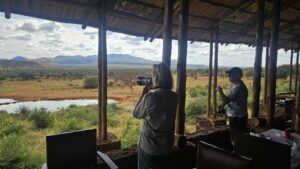
Back on the road, we drove through the Shetani Lava Flow. This is a huge stretch of dark, jagged volcanic rock that looks like it belongs on another planet. It formed just a few hundred years ago when a nearby volcano erupted and sent rivers of lava pouring across the land. Locals called it “Shetani,” which means “devil” in Swahili, because they believed the spooky black landscape was the work of evil spirits.
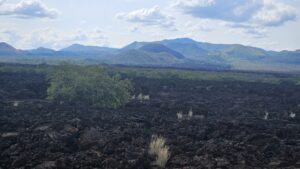
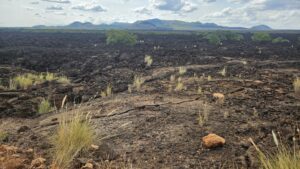

Elerai Camp and Mt Kilimanjaro
Nestled on its own private conservancy, Elerai Camp is a hidden gem with sweeping views of Mt Kilimanjaro and the surrounding plains. The spacious tents and chalet-style rooms blend perfectly with the natural landscape, giving you a true sense of the peace and quiet of Africa. The nights were chilly, so we welcomed hot water bottles in our beds, and the extra blankets for snuggling up on the veranda.
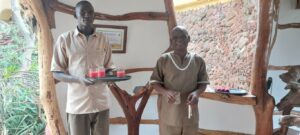
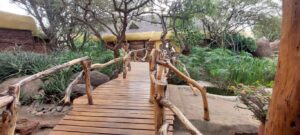
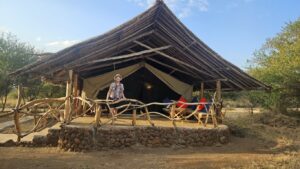

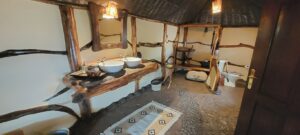
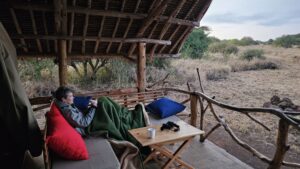
Elerai’s location means you can enjoy exclusive game viewing away from the crowds, with elephants, giraffes, and eland often wandering up to the waterhole right below camp. What can we say about Mt Kilimanjaro? What an amazing privilege it was to watch Africa’s tallest mountain rise out of the darkness, or to dine out under the stars with Kilimanjaro in the background. Truly and an experience of a lifetime.

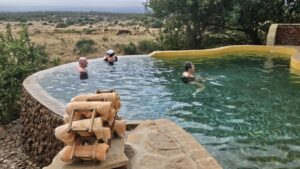
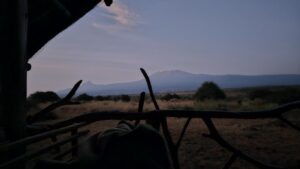
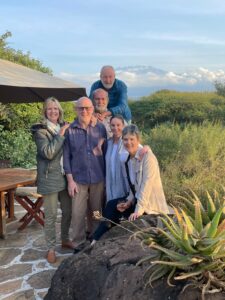
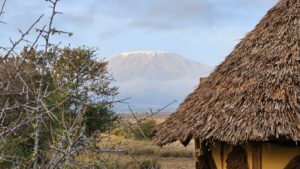
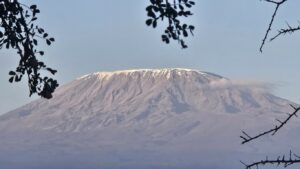
Elerai Camp is a short drive away from Amboseli National Park, famous for its large elephant herds and legendary ‘big tuskers’, was a highlight. Seeing these majestic giants framed by Kilimanjaro is an image our guests will never forget, and Thomas knew just the right spots to find them. Open plains, swamps, and acacia woodlands make it easy to spot the animals and birdlife. We were fortunate to find lions on a buffalo kill and an elephant cow with a weirdly shaped tusk. Amboseli served up huge herds of wildebeest and zebra and gave us our first sighting of striking Thompson’s Gazelles. Another highlight was seeing the majestic Crowned Crane, our Mana Travel Adventures logo.
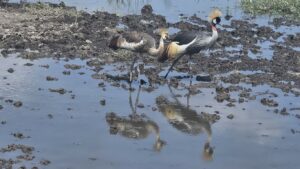
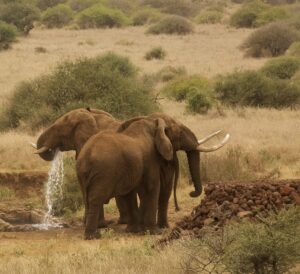
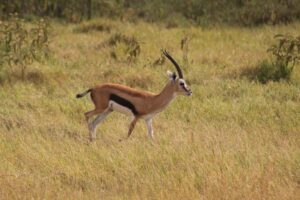
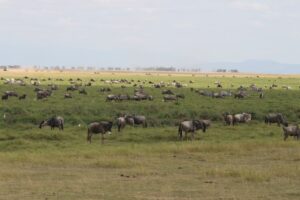
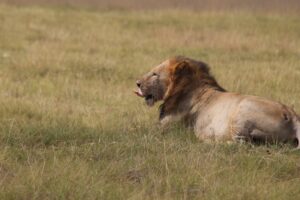
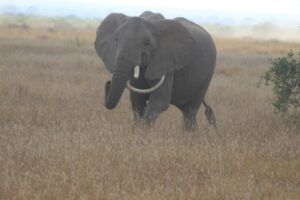
One of our guests is an avid birder and spent the morning spotting and photographing some of the incredible birdlife that call Elerai Camp home. From colourful sunbirds flitting among the flowers to majestic birds of prey soaring overhead, there was no shortage of feathered highlights. It’s amazing how many species you can tick off your list without even leaving the camp, making Elerai just as rewarding for bird lovers as it is for big game enthusiasts.
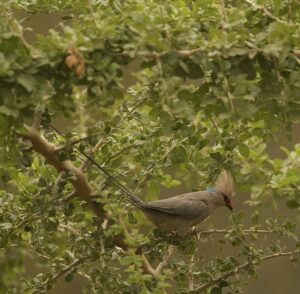
Blue-naped mousebird
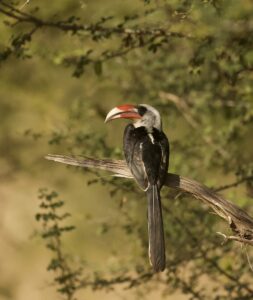
Von der Decken’s Hornbill
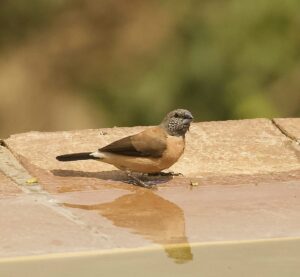
Grey-headed silverbill
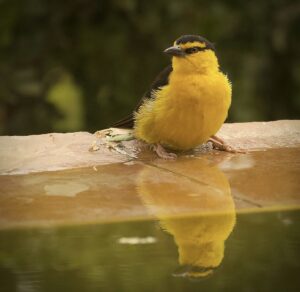
Female black-necked weaver
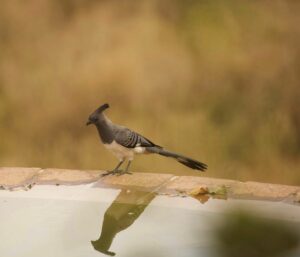
White bellied Go-away bird
Lake Naivasha: Hippos and Serenity
Next, we made our way to Lake Naivasha, a stunning freshwater lake teeming with hippos and vibrant birdlife. The journey took us along part of the infamous Nairobi–Mombasa Highway, an experience that’s definitely not for the faint-hearted! As the main route linking Kenya’s interior to the coast, it’s often choked with endless lines of trucks and cars. Some sections of the road are in poor condition, making progress frustratingly slow. If you can, skip the stress and dust by opting for a scenic charter flight instead; you’ll arrive quicker and with your nerves intact!
We stayed at the lovely Lake Naivasha Sopa Lodge, the perfect place to unwind and soak up the peaceful lakeside scenery. Guests could simply relax by the pool, on the lawns, or hop on a boat ride for a closer look at the hippos lazing in the shallows. Although the resort has more of a hotel vibe, it’s wonderfully alive with wildlife. Herds of tame zebra, giraffe, and Defassa waterbuck wander freely through the gardens, while Eastern Black and White Colobus monkeys play in the trees overhead. Here we had probably our best meal of the trip: a mouth-watering braai (barbecue) cooked under the stars, complete with traditional meats, fresh salads and delicious desserts.
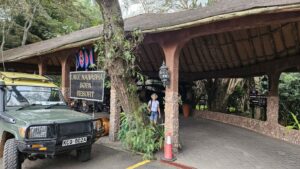

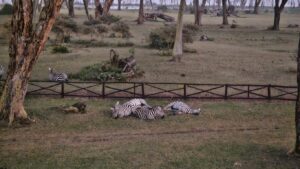
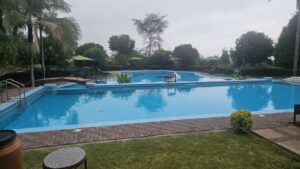
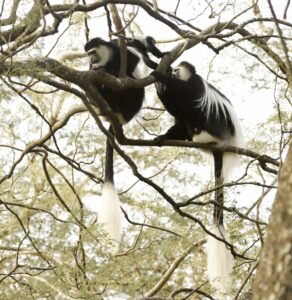
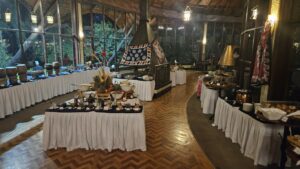
While at Lake Naivasha, we visited Crescent Island, a hidden gem known for its connection to the classic film Out of Africa. Many of the movie’s wildlife scenes were shot here. Animals were brought in from the Maasai Mara for the movie. The lions were later returned, but the other wildlife remains, thriving in this peaceful sanctuary. What makes Crescent Island unique is that guests can actually walk freely among the animals, an unforgettable experience with zebras, wildebeest, and giraffes grazing calmly around you. We were especially lucky to witness nature at its freshest, spotting a newborn giraffe (only three hours old) taking its very first wobbly steps. Truly magical!
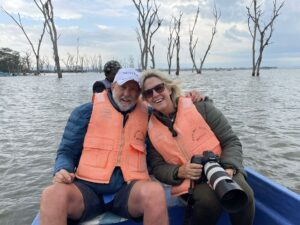
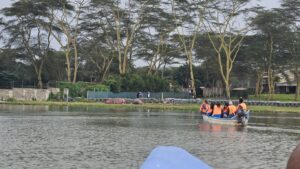
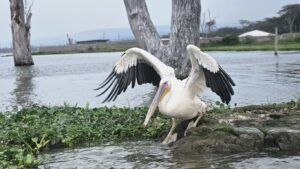
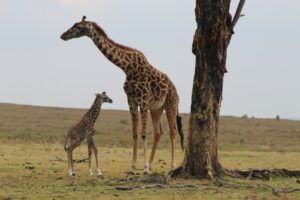
🦁 Maasai Mara: The Crown Jewel
No Kenyan safari is complete without visiting the legendary Maasai Mara, and this trip was no exception! Our stay at the Intrepid Tented Camp in the heart of the Maasai Mara was one of the highlights of our safari. This beautiful camp perfectly combines the romance of classic tented accommodation with all the modern comforts you’d hope for. From the friendly staff who remembered everyone’s name, to cocktails under the stars. The camp’s facilities, including spacious tents with private verandas overlooking the Talek River, made it easy to unwind while watching wildlife wander by. It’s the kind of place that feels like a little luxury oasis in the wild.
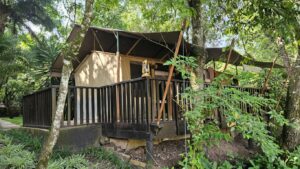

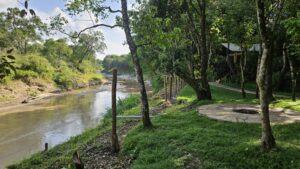
The facilities at Mara Intrepid Camp are outstanding, thoughtfully blending comfort with the wild beauty of the Masai Mara. From the discreet riverside office and peaceful library to the welcoming bar area and stunning infinity pool overlooking the savannah, every detail is designed for relaxation and connection with nature.
Delicious meals are served in the open-air restaurant, making the most of the fresh air and spectacular views. In the evenings, guests gather around the campfire as the resident naturalist shares fascinating stories and insights about the wildlife and the park, adding an unforgettable touch to each day’s adventure.
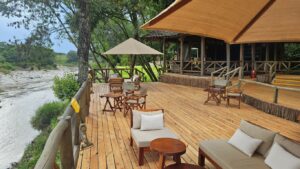
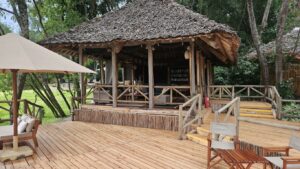

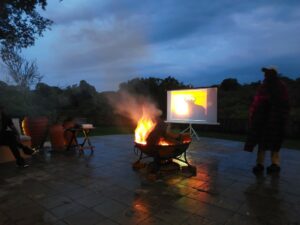
The Maasai Mara is world-famous for good reason, its wide-open plains, dramatic wildlife sightings, and iconic scenes draw travellers from all over the globe. Because of this, the Mara can sometimes feel busier than some of Kenya’s more remote parks. So, it’s not unusual for several vehicles to gather around a big cat or other exciting sightings. While this ensures you never miss the action, it can sometimes feel a bit crowded compared to places like Tsavo or Amboseli, where you may have a wildlife moment all to yourself. That’s why we design our safaris to include a mix of both, the must-see highlights of the Mara alongside the quieter beauty of Kenya’s lesser-known parks, to give you the best of both worlds.
Although it was still a little early for the start of the migration, there was an abundance of wildlife to enjoy, including topi, eland, zebra, gazelles, olive baboons, warthogs, hyenas, and even a male cheetah marking his territory on top of a mound of rocks. We also came across numerous lions, doing what lions do best… sleeping!
After a picnic lunch beneath one of the park’s iconic Desert Date (Balanites aegyptiaca) trees, we made our way to the Mara River. The river was alive with pods of hippos grunting and jostling in the water, while the infamous Nile crocodiles basked in the sun along the muddy banks. These giant reptiles were a chilling reminder of the drama soon to unfold, when thousands of wildebeest and zebra will have to brave the treacherous crossing.
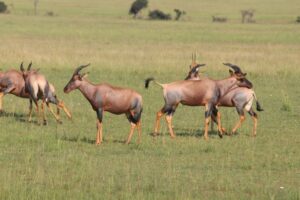
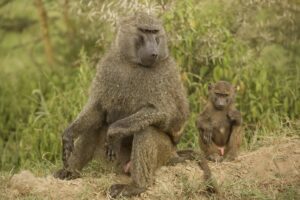
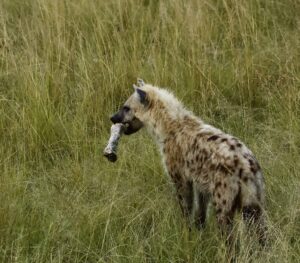
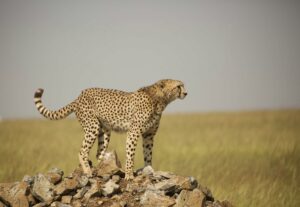
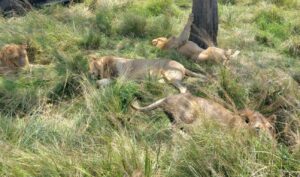


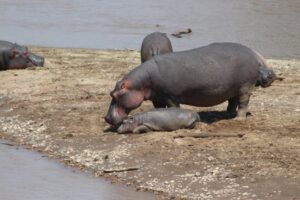
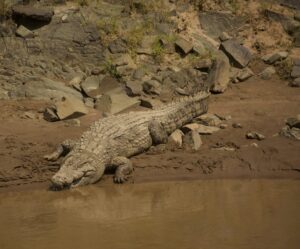
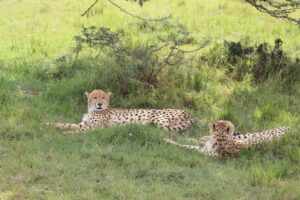
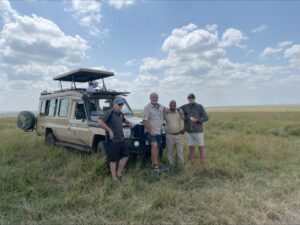
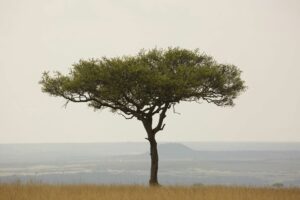
We joined a fascinating Maasai village tour, which offered a glimpse into the daily life and vibrant culture of the Maasai people. We were welcomed with demonstrations of their traditional “jumping” dance, an energetic display of strength and pride, accompanied by rhythmic singing and chanting. The villagers also showcased their skills in fire-lighting using traditional methods, an age-old practice still used today.
As part of the visit, we were invited inside a typical Maasai hut, learning how these homes are built by hand from locally sourced materials like mud, sticks, and cow dung.
The experience was rounded off with a chance to browse beautiful, handcrafted beadwork and curios, with purchases helping to support the community. It was an authentic and enriching way to connect with the heritage and traditions that have shaped the Maasai way of life for generations.
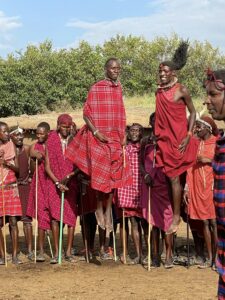
🦩 Final Stop: Lake Nakuru’s Flamingo Fringe
To round out our safari, we drove to Lake Nakuru our group’s unanimous choice as the best National Park that we’d been to. Our stay at Lake Nakuru Sopa Lodge was the perfect finale to our Kenyan adventure. Perched on a hillside with sweeping views over the Lake Nakuru National Park, the lodge feels like a peaceful retreat surrounded by acacia trees and abundant birdlife. The rooms are spacious and comfortable, and the friendly staff made everyone feel right at home. After a day exploring the park’s diverse wildlife, guests could relax by the pool, enjoy a sundowner with panoramic views, and swap safari stories around the fireplace.
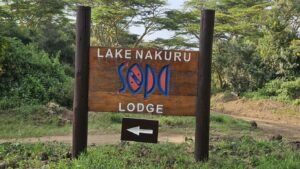
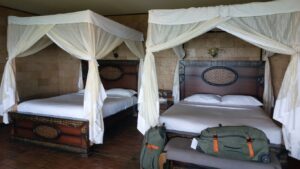
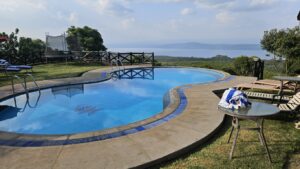
Lake Nakuru was once world-famous for its vast flocks of pink flamingos, which gathered in their thousands to feed on the abundant algae that thrived in the lake’s highly saline waters. However, in recent years, increased rainfall has diluted the lake’s salinity, reducing the algae blooms and prompting many of the flamingos to move on to nearby Lake Bogoria and Lake Elmenteita, where conditions remain more favourable for feeding.
Despite this shift, the diversity and density of birdlife at Lake Nakuru is still truly remarkable. We were treated to sightings of graceful pelicans gliding across the water, striking saddlebill storks and elegant spoonbills wading in the shallows, and even the cutest baby jacanas delicately stepping across floating vegetation.
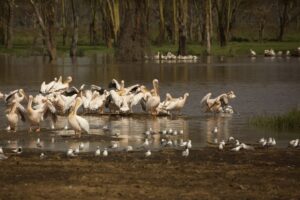
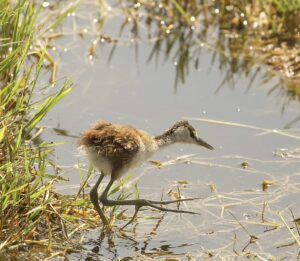
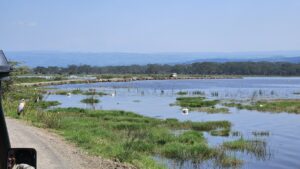
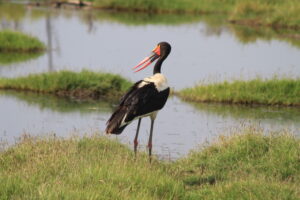
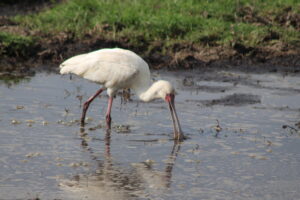
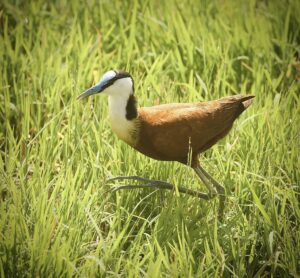
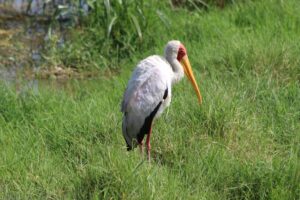
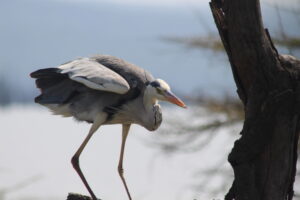
Nakuru National Park is one of the best places to see both black and white rhino. One of the big highlights for us was spotting a Rothschild’s giraffe for the first time. They’re pretty easy to tell apart from other giraffes because they have pale, almost white lower legs instead of the usual patterning seen on their southern African cousins.
We also saw big herds of buffalo grazing and lazing about, which really added to that wild, open feel of the park. And on our way out, we got lucky and stumbled on a pride of lions feasting on a fresh zebra kill right next to the road.
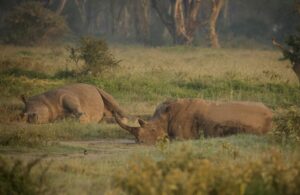
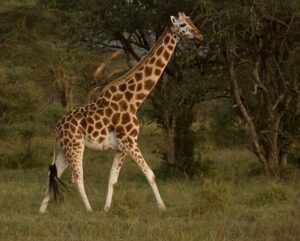
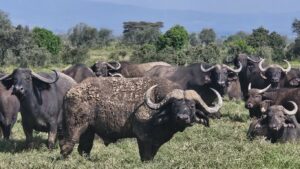
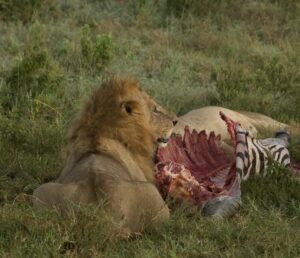
Unfortunately, we only spent one night at Lake Nakuru – a return visit to explore the park further is definitely in our plans.
All too soon, it was time to return to Nairobi for the next leg of our adventure – beautiful Zanzibar Island.
Our Driver/Guide, Thomas Tungu, dropped us off at our hotel with a real twinge of sadness on both sides. His genuine care for us, wonderful sense of humour, and deep knowledge of the wildlife and the country added so much to our experience. Guides like Thomas can make or break a safari. They’re not just there to get you from A to B, but to share stories about local country and culture, and to make every game drive feel special.
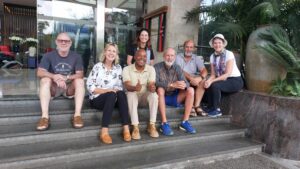
Why Our Local Partnerships Matter
We’ve spent years exploring Africa, and we know that having trusted people on the ground makes all the difference. Our carefully chosen local suppliers share our commitment to authentic experiences and exceptional service, and we work closely with them to ensure your safari is perfect.
From Nic’s warm welcome, to Rebecca’s seamless transfers, to Thomas’s expert guiding, their dedication brought our vision for this safari to life. Together, we create journeys you’ll remember forever.
Why Travel With Us?
As Africa-born travel specialists, we know how Africa works. We often personally escort our groups to ensure that every moment is authentic, safe, and special, whether it’s a sundowner at a remote waterhole or sharing a laugh around the campfire. When you travel with us, you travel with family.
✈️ Ready to Plan Your Own African Safari?
If you’ve ever dreamed of an African safari that goes beyond the ordinary, please get in touch and we’ll make your bucket list trip happen.
Read About My Travel Experiences
My Accreditation & Awards
Diploma in Travel & Tourism
Covermore Travel Insurance Accreditation
nib Travel Insurance Accreditation
Rocky Mountaineer Tracks Diploma
Virgin Voyages Gold Tier Certification
Africa's Eden Zimbabwe, Botswana, Namibia Certification
CLIA Australasia Member (Cruise Lines International Association)
Travel Advisors listed on Find A Travel Expert are:
- Affiliates of Your Travel & Cruise Pty Ltd, operating since 2003.
- Your Travel & Cruise is a member of ATAS, CLIA and the Magellan Travel group, a wholly owned subsidiary of Helloworld Travel.

